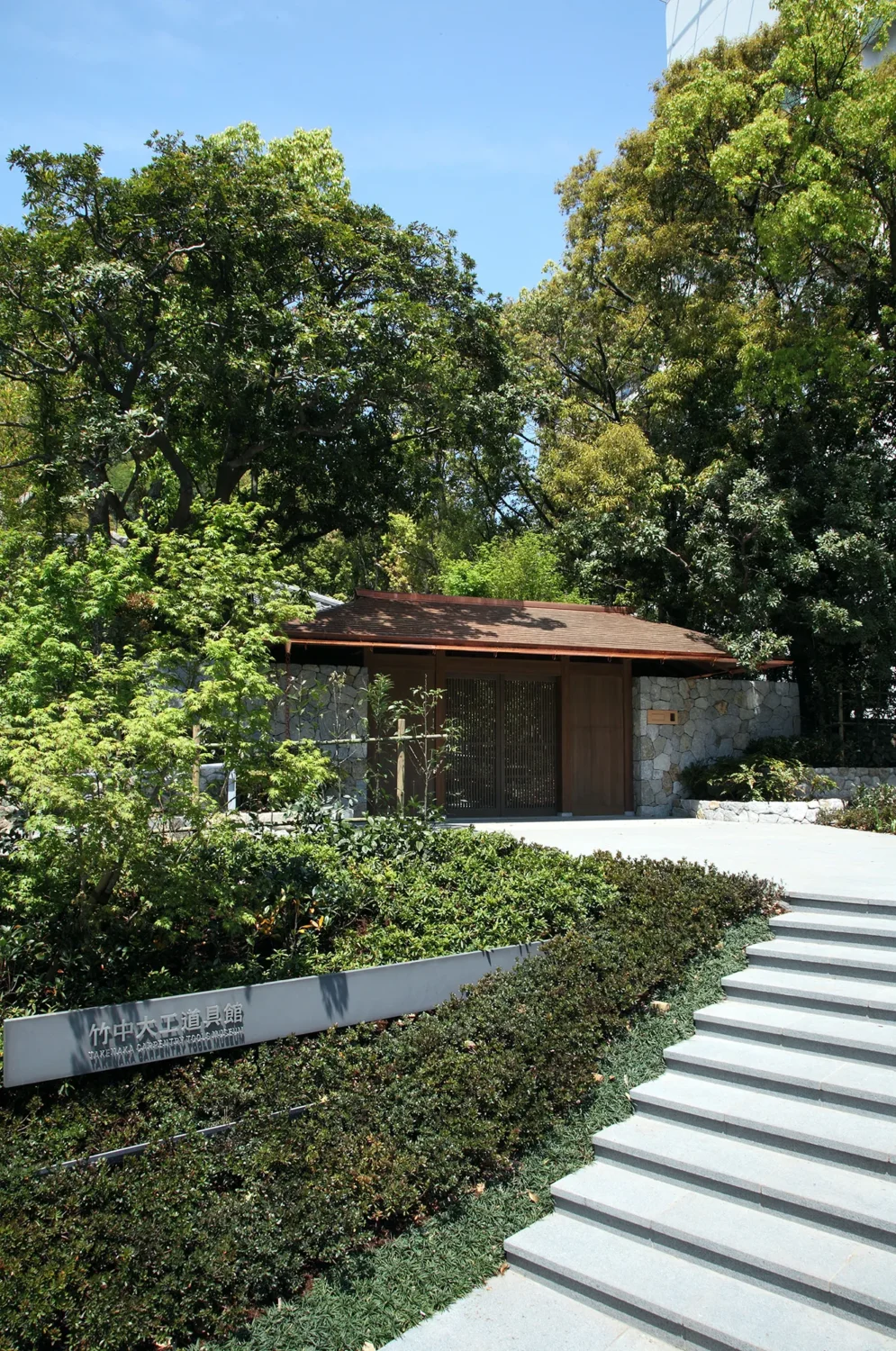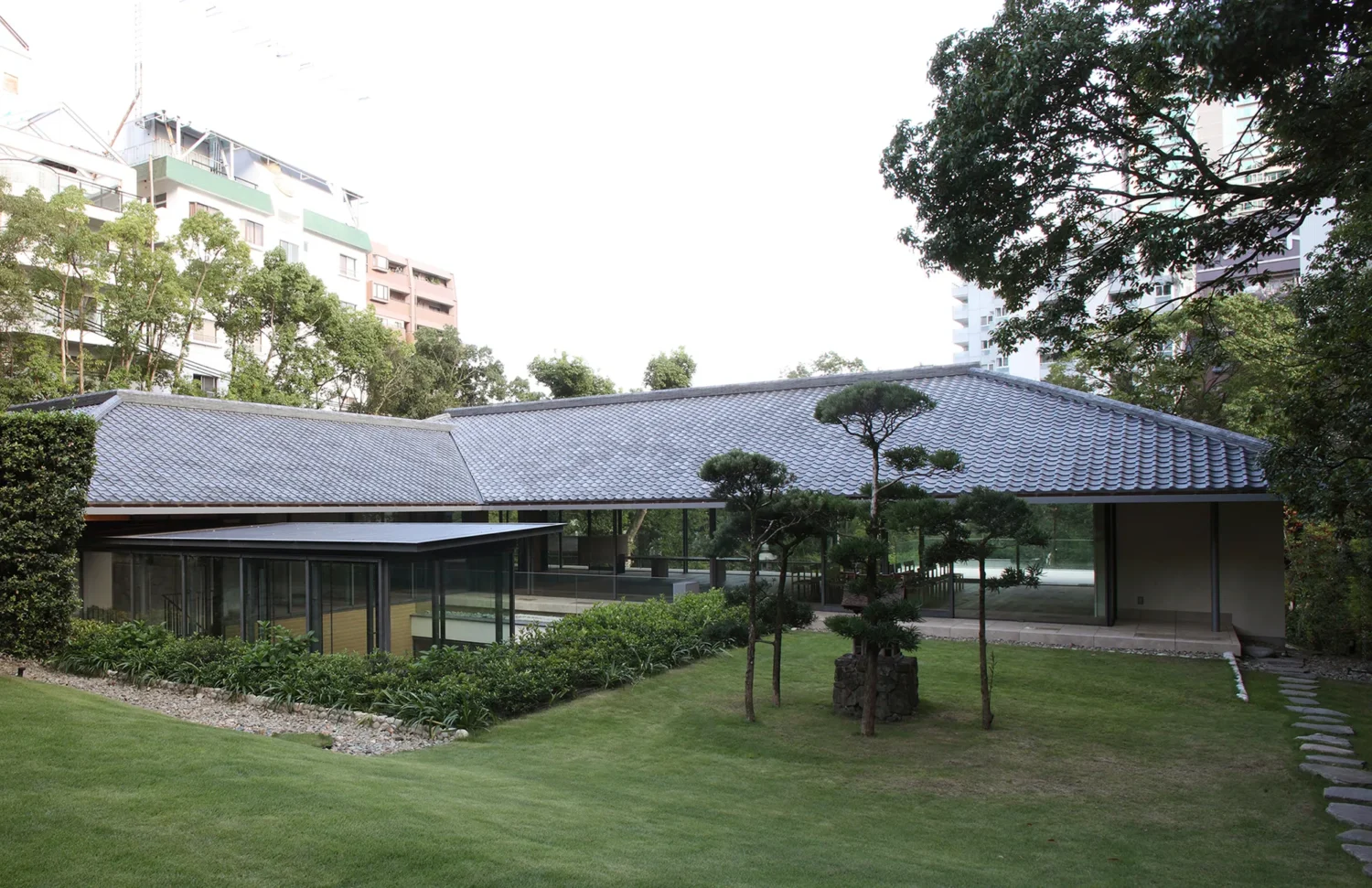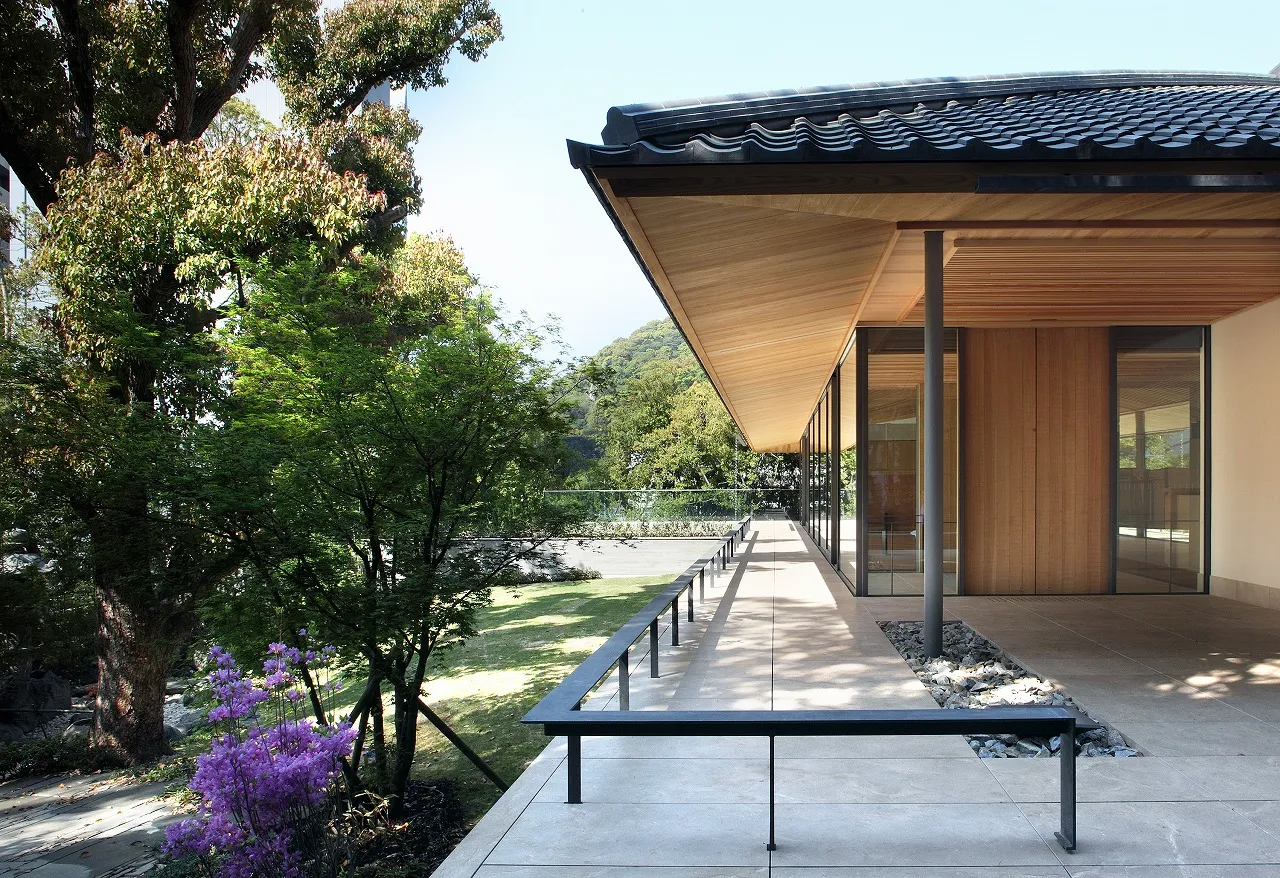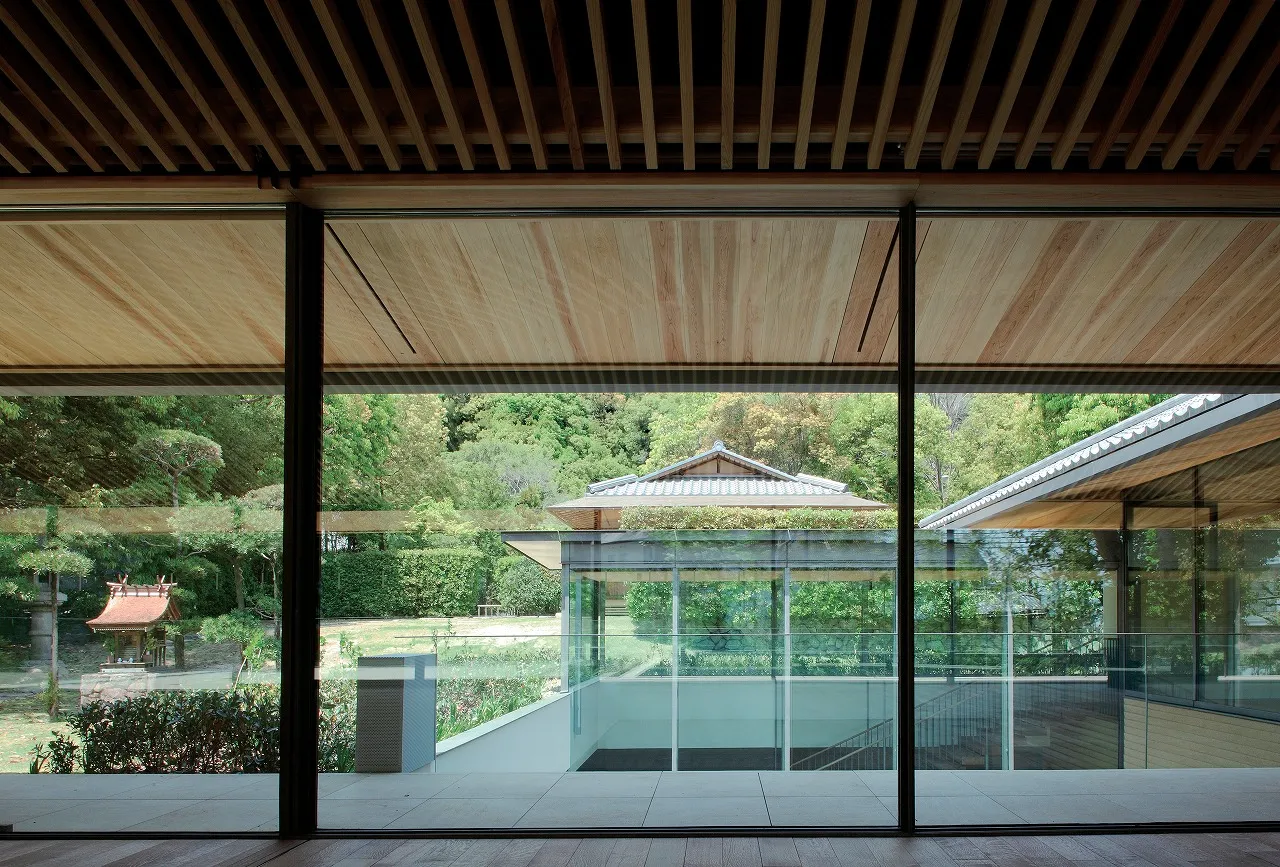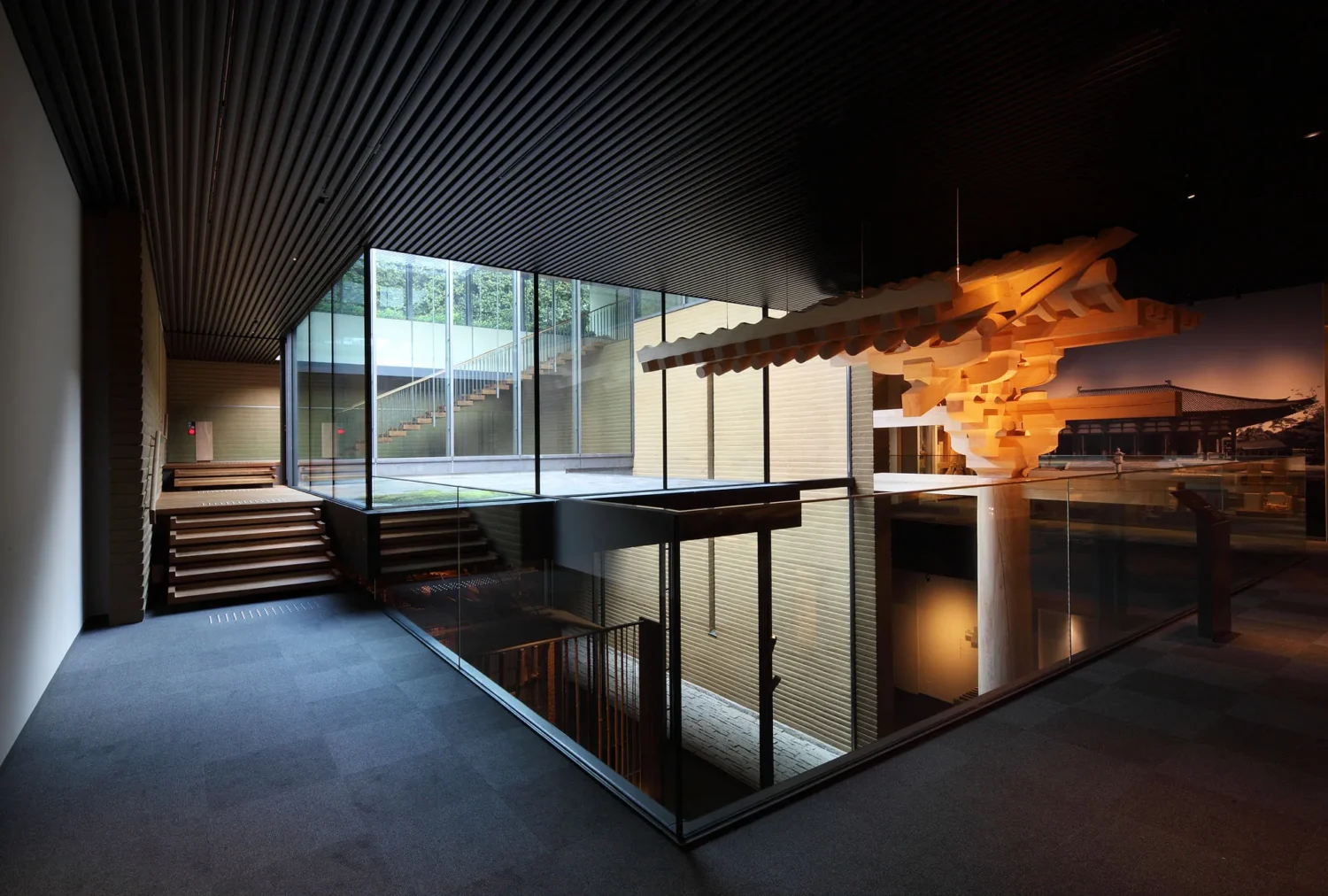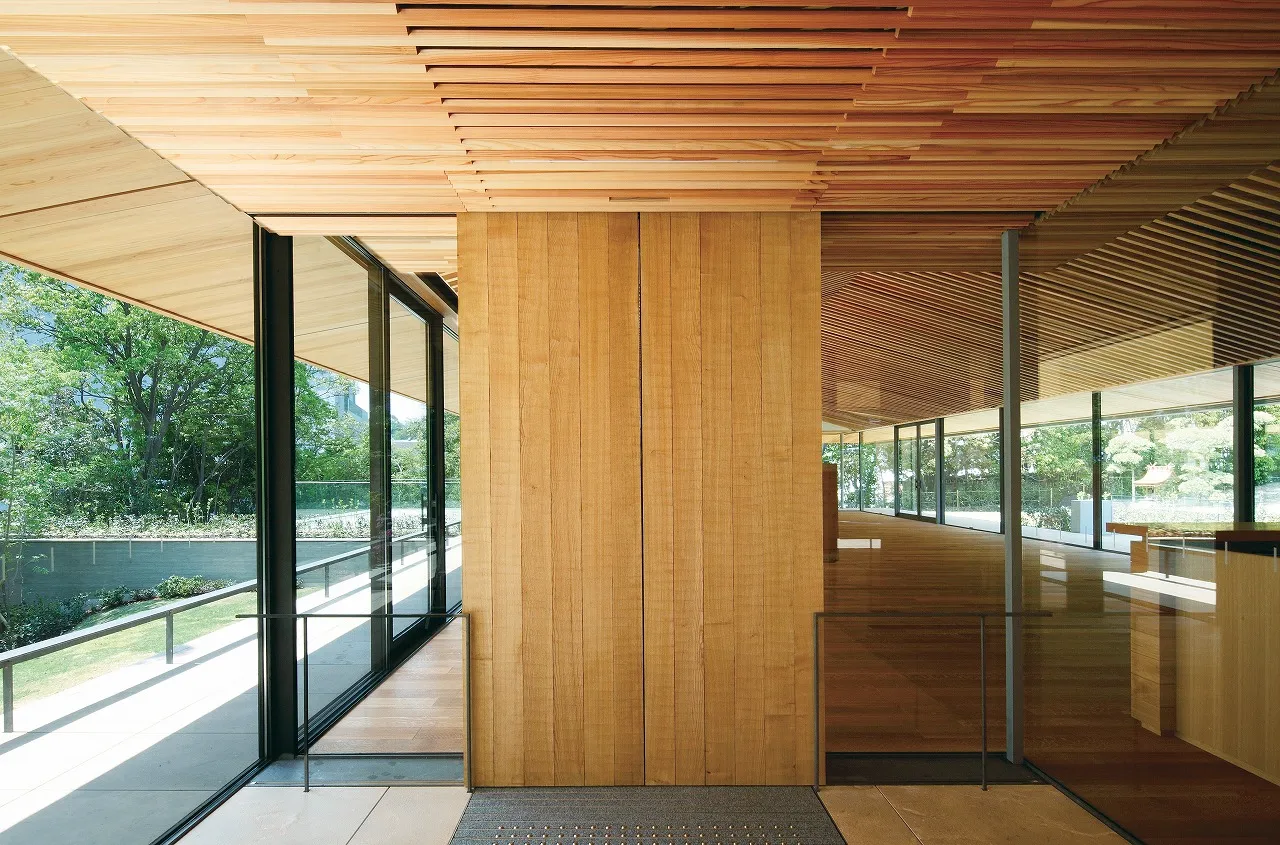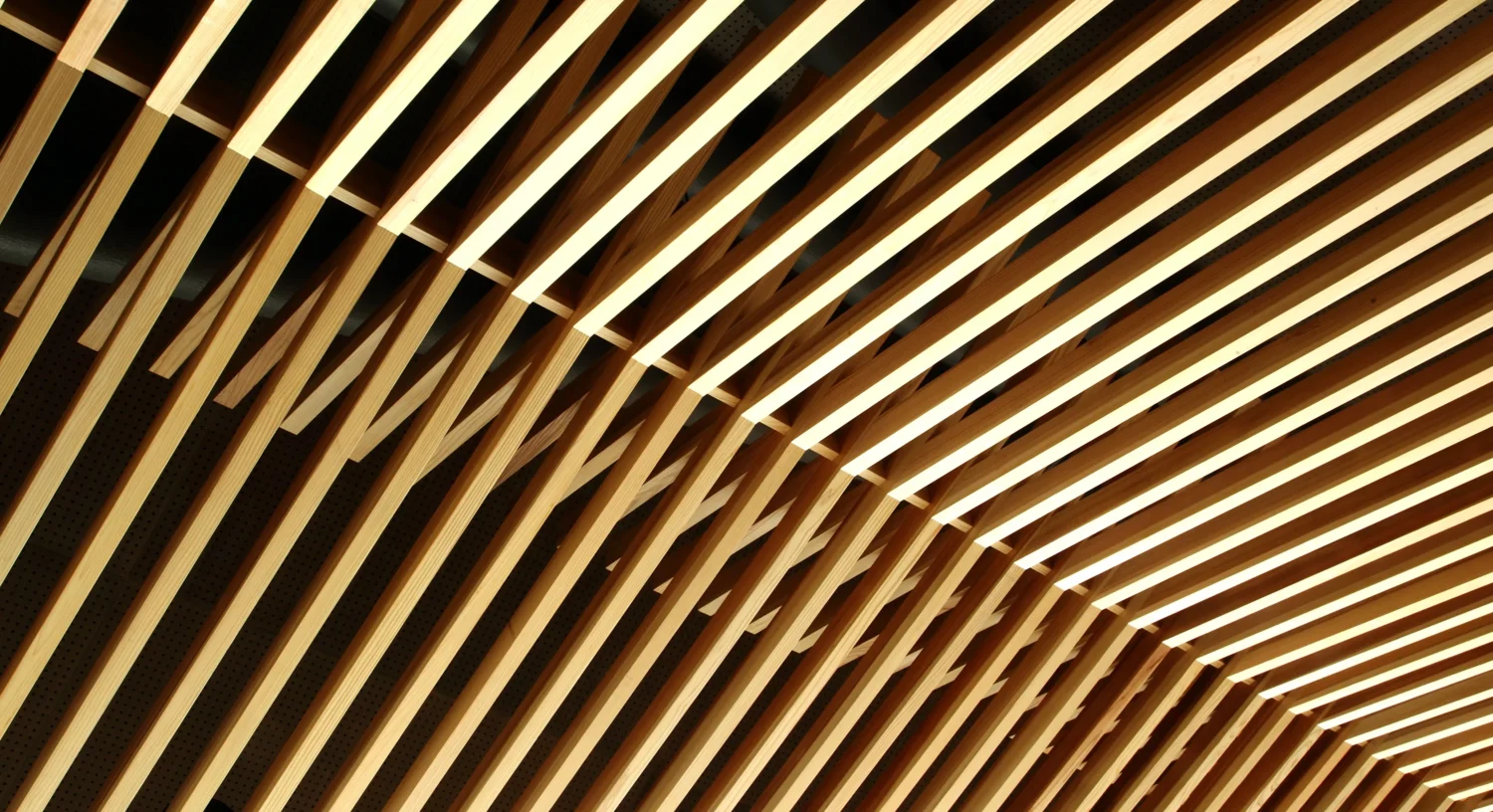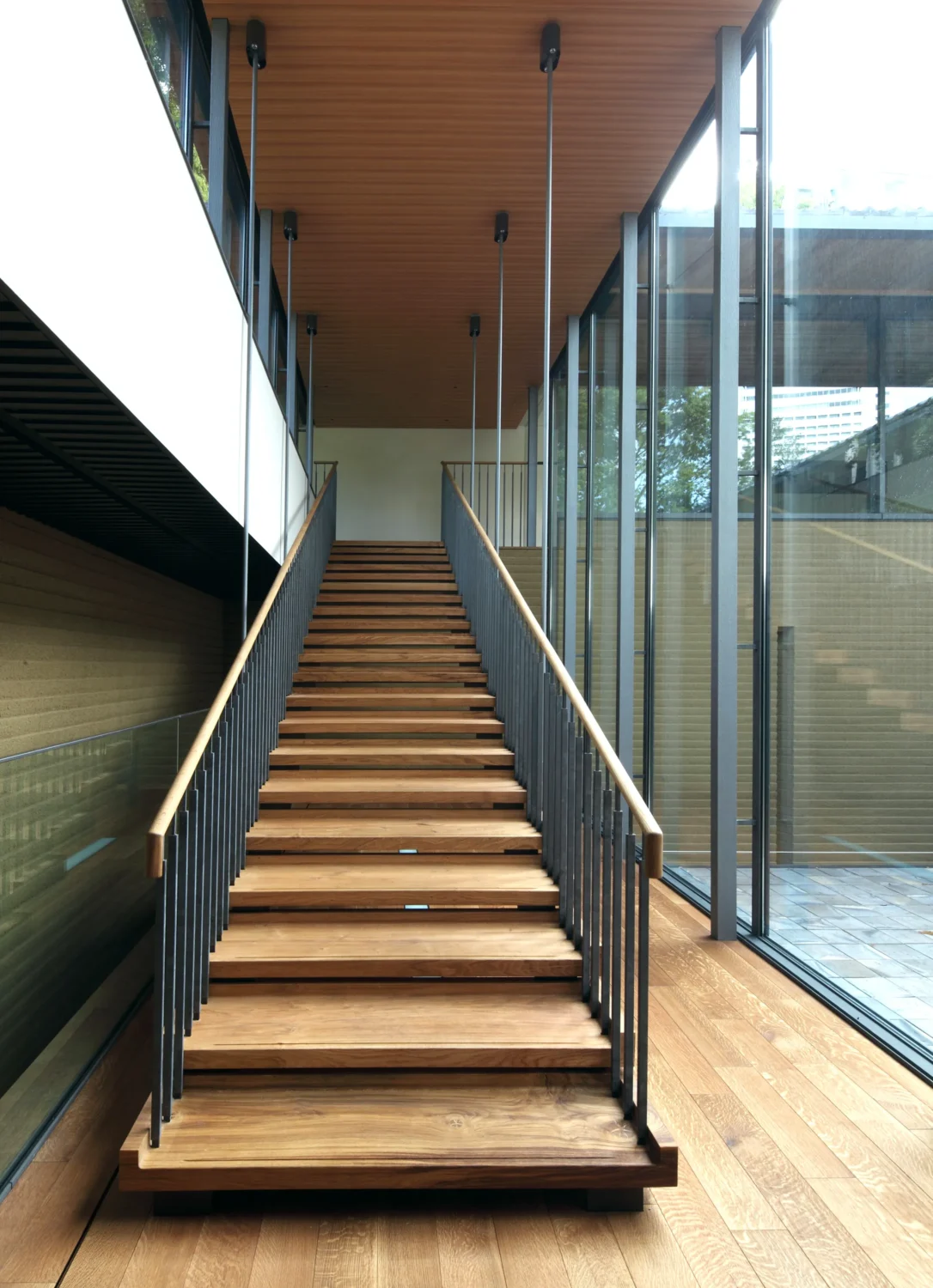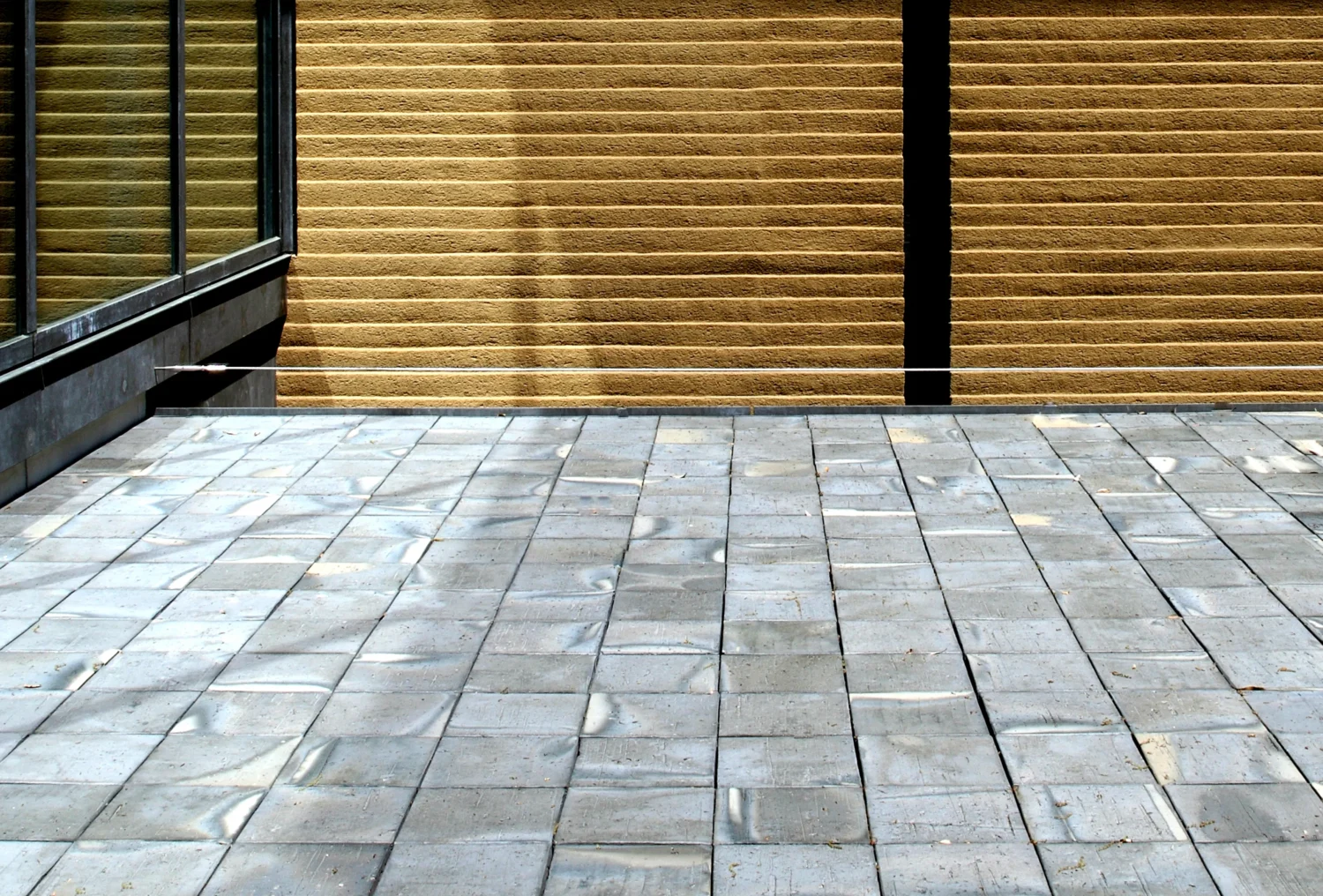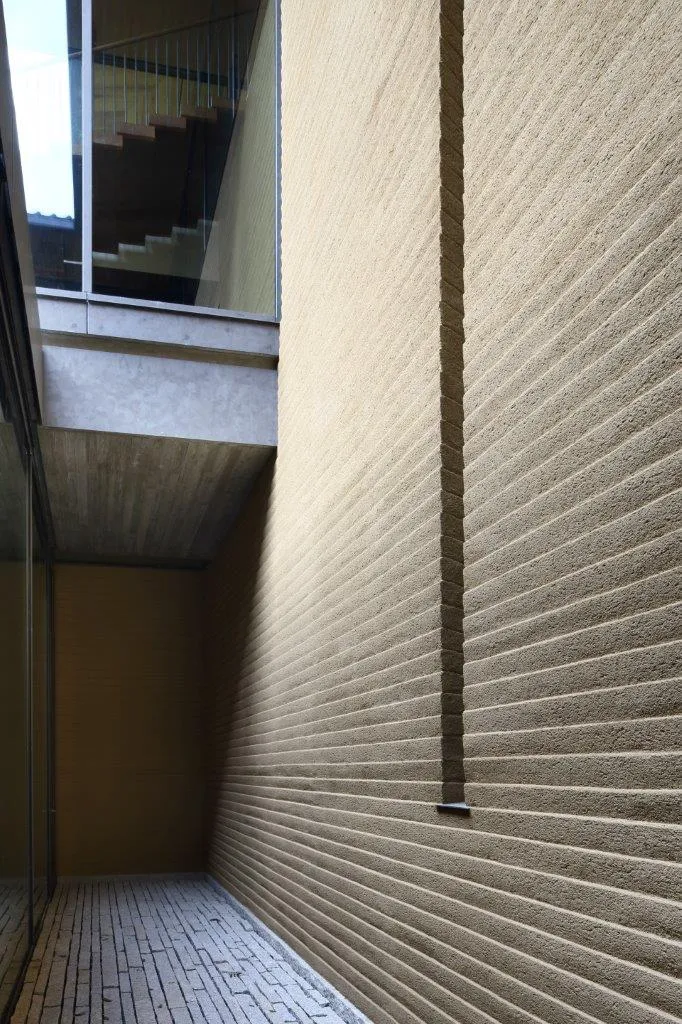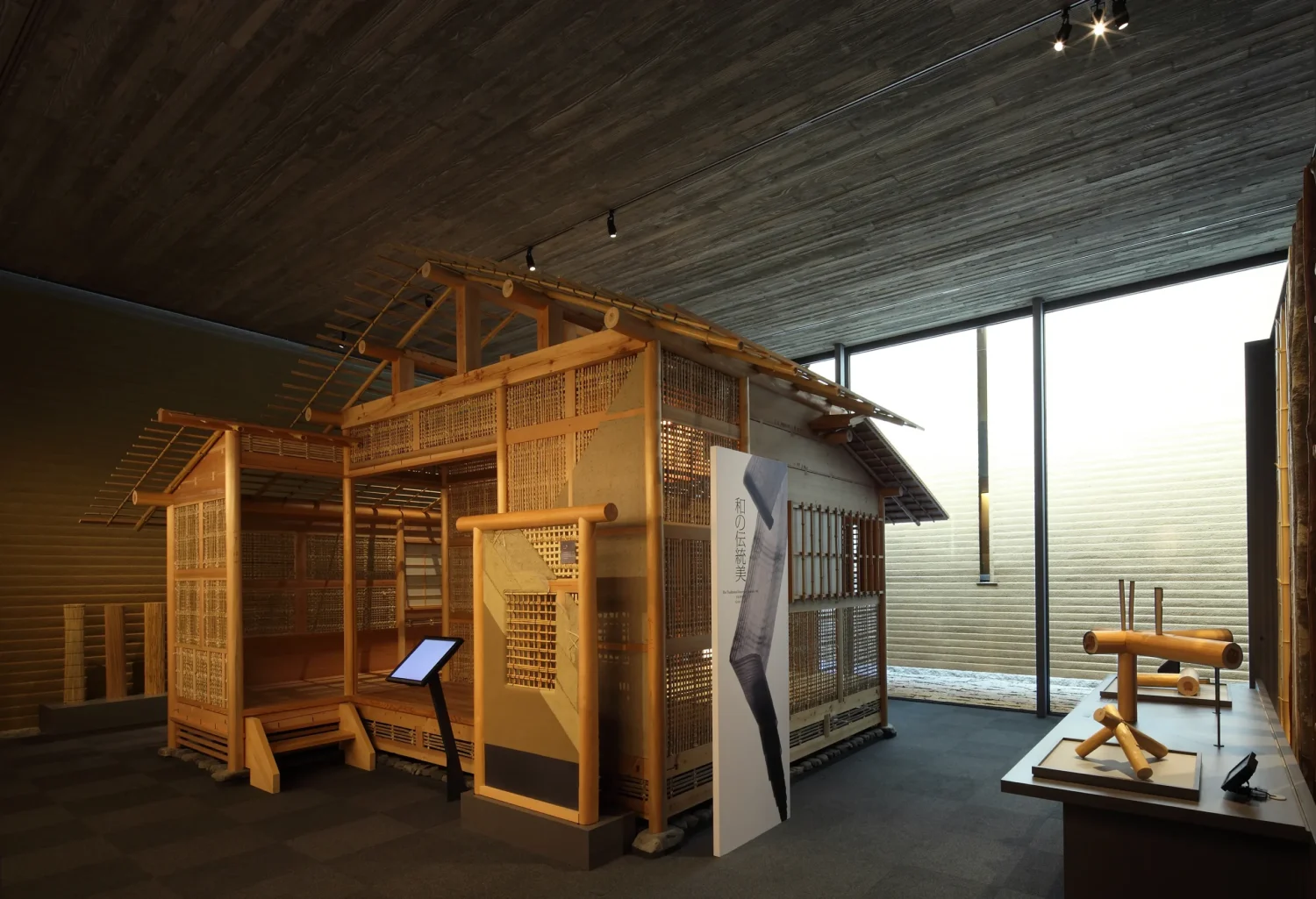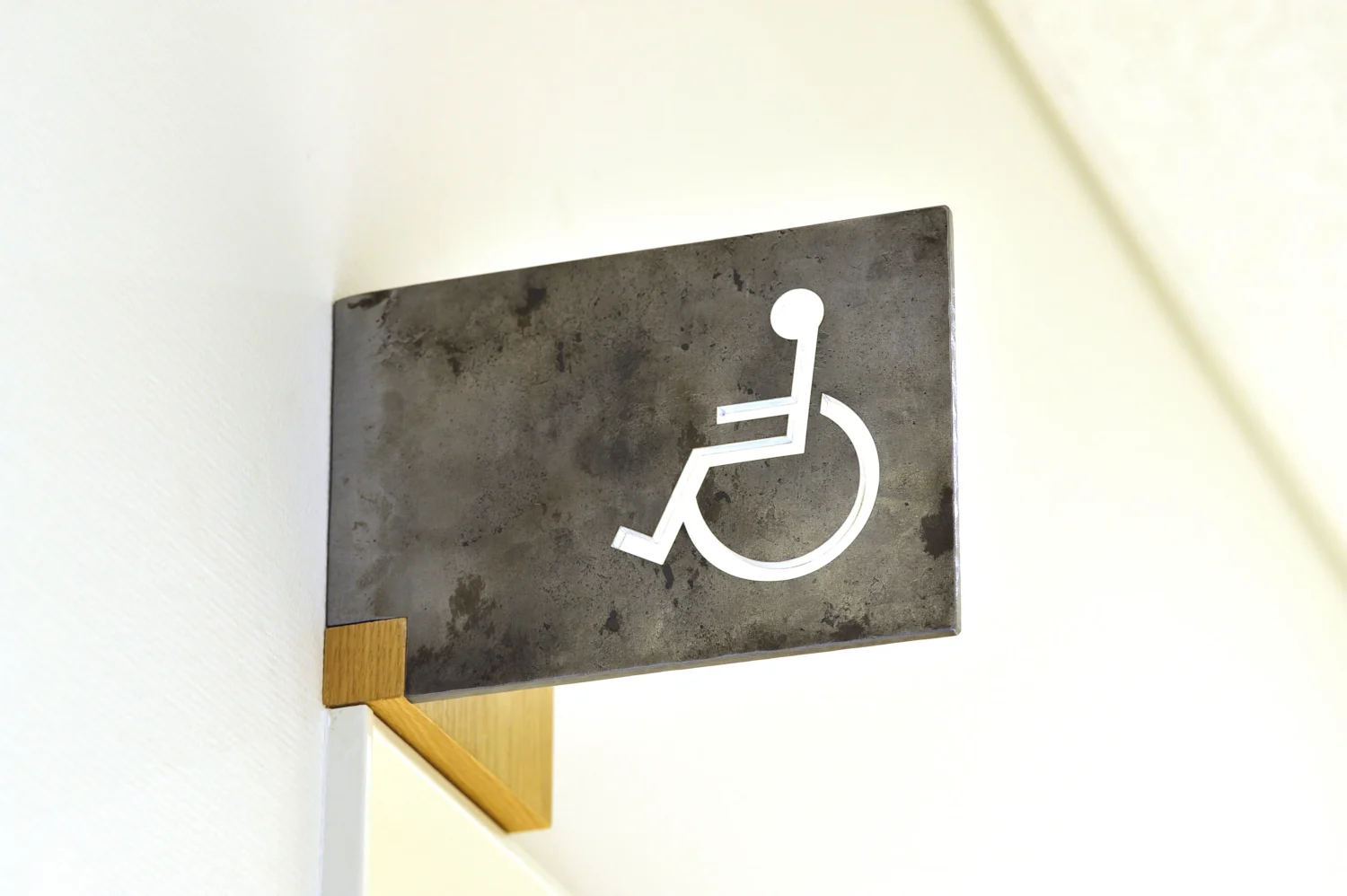Museum Architecture
Connecting man and nature
Japanese architecture
The new museum has opened at the foot of Mount Rokko in Kobe. Despite being located close to the Shinkansen`s Shin-Kobe Station, it is surrounded by lush greenery. The building has one floor above ground and two floors below the ground in order to restrain its presence. The teahouse that originally stood at the site has been preserved and tree trimming has been kept to a minimum. It is an oasis in the city that is enveloped by a forest.
The transparent above-ground floor with a lobby walled by glass is furnished with wooden tables and chairs produced by local woodworking artists. Visitors can make themselves comfortable here, enjoying a Japanese rock garden on the side of the sea, and the majestic Mount Rokko on the other side. A large courtyard has been created underground in order to bring in natural light and the changes of the seasons.
While this is a museum for enjoying tools, it is more a place for passing on the spirit of making things that the Japanese have cherished since antiquity. We hope visitors will enjoy our characteristically Japanese architecture of harmony which, rather than being symbolic or self-assertive, becomes the subtle link between man and nature.
The transparent above-ground floor with a lobby walled by glass is furnished with wooden tables and chairs produced by local woodworking artists. Visitors can make themselves comfortable here, enjoying a Japanese rock garden on the side of the sea, and the majestic Mount Rokko on the other side. A large courtyard has been created underground in order to bring in natural light and the changes of the seasons.
While this is a museum for enjoying tools, it is more a place for passing on the spirit of making things that the Japanese have cherished since antiquity. We hope visitors will enjoy our characteristically Japanese architecture of harmony which, rather than being symbolic or self-assertive, becomes the subtle link between man and nature.
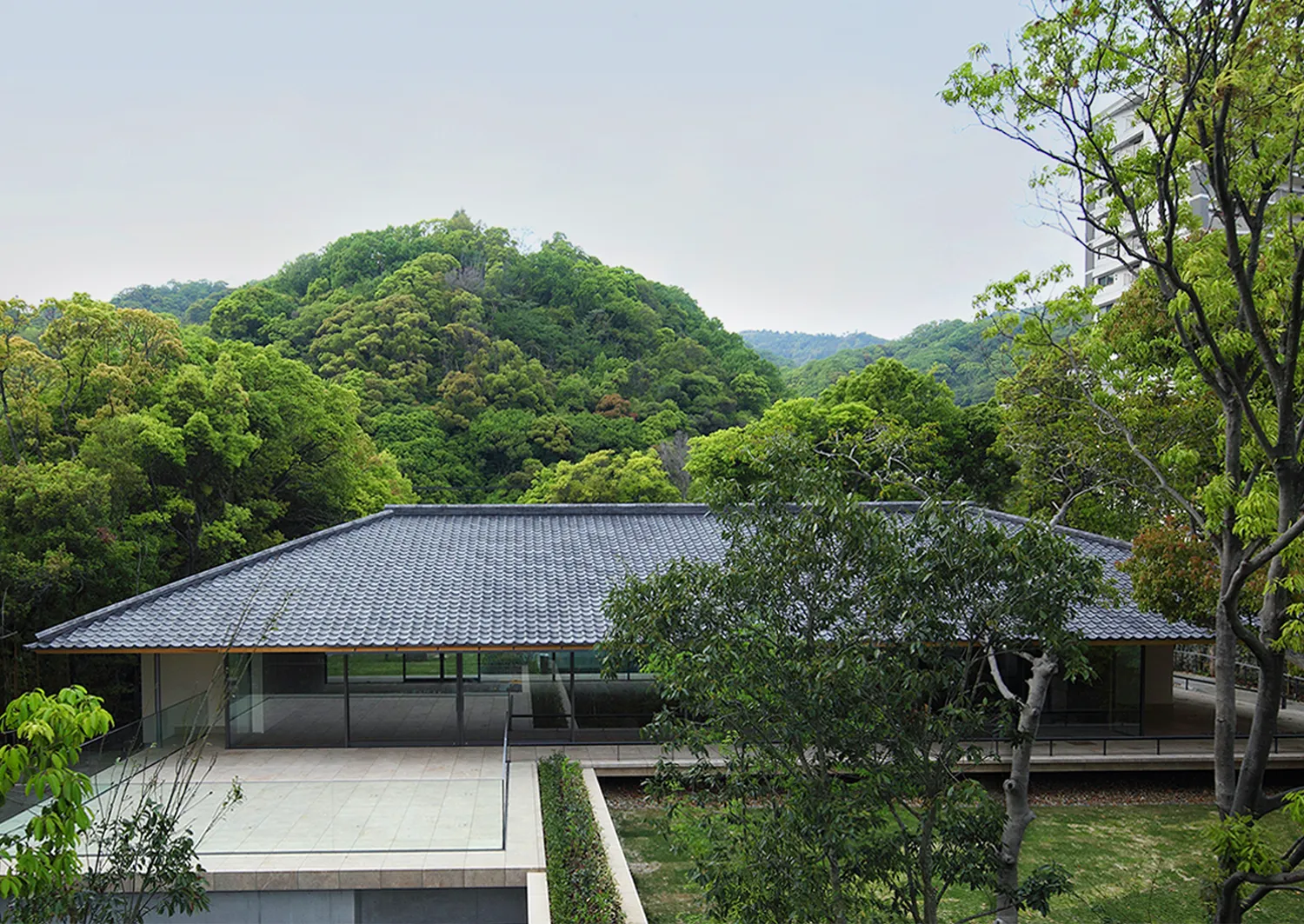
Connecting tradition and innovation
Skill of the master
We would like guests to feel the renowned skill of Japanese artisans known throughout the world. The building may appear modern at first sight, but it is replete with traditional craftsmanship--the museum itself is a place for experiencing the skills of master craftsmen first hand.
The walls that surround the building are finished with plaster containing juraku clay from Kyoto. The internal sides are finished in the same manner as the Katsura Imperial Villa (parari shiage). The interior spaces around the courtyard are plastered (kezuridashi) earthen surfaces reminiscent of weathered hanchiku walls. The beautiful camber roof is fitted with ibushi (smoked roof tiles) from Awaji, and works to welcome visitors.
The aboveground lobby is a large space that combines traditional carpentry with contemporary architectural technology. The framework is composed of inconspicuous steel members, which makes full use of structural technology to create an extensive space sans any visible columns. The ceiling is a traditional houseboat-shaped funazoko ceiling made of natural wood. These qualities make the lobby a neat and hospitable space crafted through traditional timberwork techniques.
There are numerous other details which demonstrate the skill of traditional craftsmanship such as the automatic door with a dimple (naguri) finishing and signs hand-forged by blacksmiths. Trying to identify whether a given structural element is made from traditional or contemporary techniques is just one of the ways to enjoy your time at the Takenaka Carpentry Tools Museum.
The walls that surround the building are finished with plaster containing juraku clay from Kyoto. The internal sides are finished in the same manner as the Katsura Imperial Villa (parari shiage). The interior spaces around the courtyard are plastered (kezuridashi) earthen surfaces reminiscent of weathered hanchiku walls. The beautiful camber roof is fitted with ibushi (smoked roof tiles) from Awaji, and works to welcome visitors.
The aboveground lobby is a large space that combines traditional carpentry with contemporary architectural technology. The framework is composed of inconspicuous steel members, which makes full use of structural technology to create an extensive space sans any visible columns. The ceiling is a traditional houseboat-shaped funazoko ceiling made of natural wood. These qualities make the lobby a neat and hospitable space crafted through traditional timberwork techniques.
There are numerous other details which demonstrate the skill of traditional craftsmanship such as the automatic door with a dimple (naguri) finishing and signs hand-forged by blacksmiths. Trying to identify whether a given structural element is made from traditional or contemporary techniques is just one of the ways to enjoy your time at the Takenaka Carpentry Tools Museum.
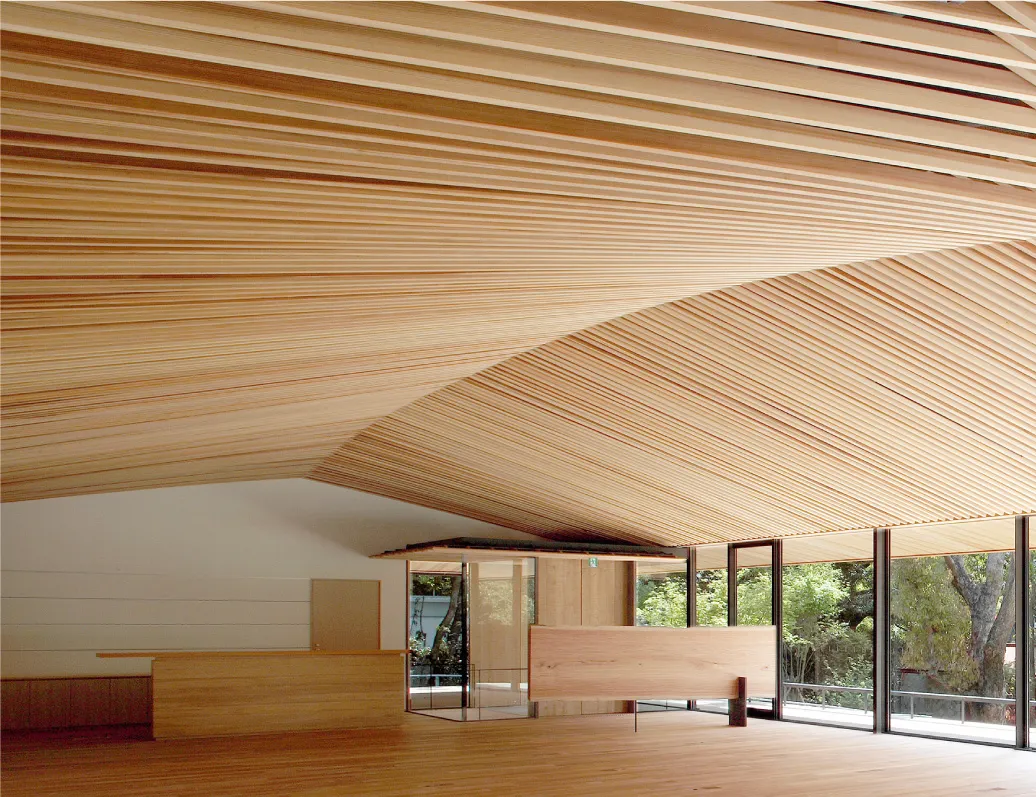
Building specifications
Structure | RC + S |
|---|---|
Dimension | One stories above ground and two below |
Architectural Area | 539㎡ |
Tiotal Floor Area | 1,884㎡ |
Program | F1 (ground floor) = Entrance, Lobby, Special Exhibition Space, Lecture Theater, Main Office, Museum Shop B1F (basement floor 1) = Exhibition Gallery, Storacge, Staff Rooms B2F (basement floor 2) = Exhibition Gallery, Workshop, Library, Storage, Staff Rooms |
Designed and Constructed | Takenaka Corporation |
Information
Special Exhibition
Permanent Exhibitions
Publications
About us
